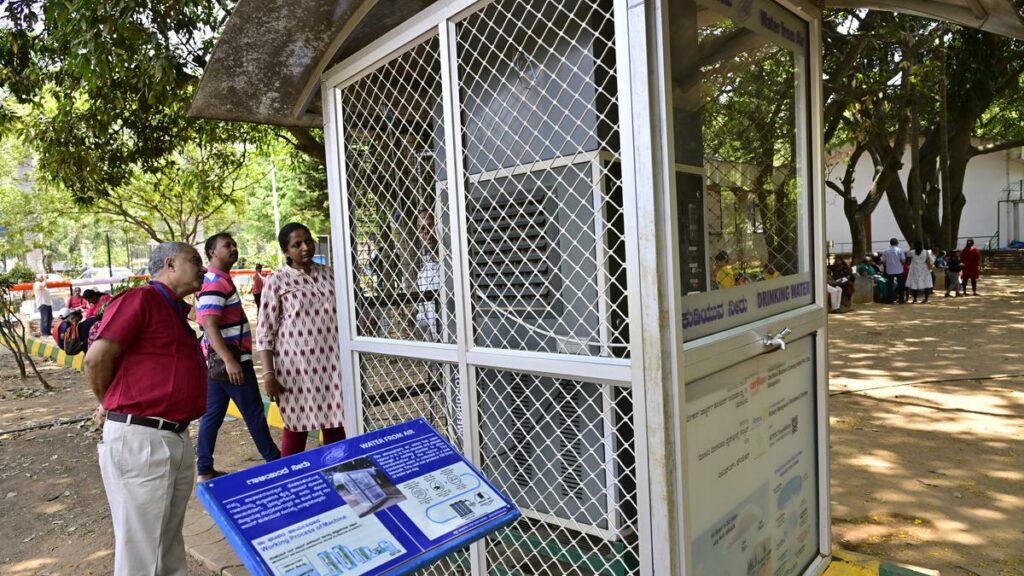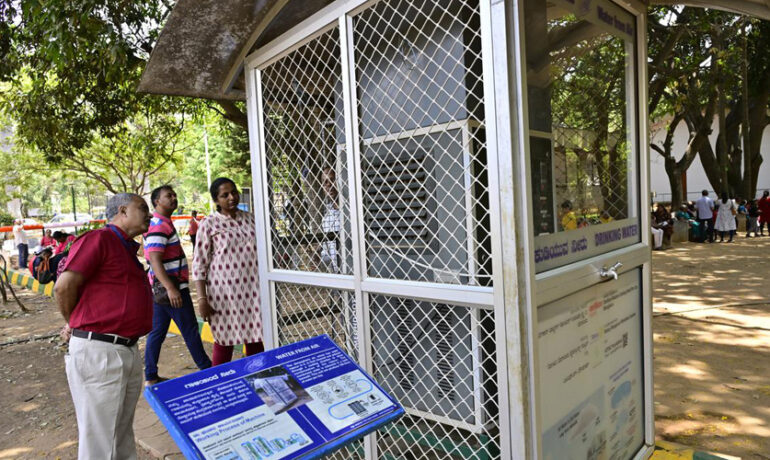Energy Water And Development Corp. (OTCQB:EAWD) April 16, 2024 /energy-water.com/
The city of Bengaluru, known for its technological boom and rapid development, faces a growing water crisis threatening the daily lives of its residents and the functioning of essential institutions. However, in the midst of this challenging situation, an innovative solution arises: Atmospheric Water Generators (AWG).
These devices, which extract water from the ambient air, are making a difference in providing clean drinking water in the city. Institutions such as K. R. Puram Government Hospital and Government Primary School in Rajarajeshwari Nagar have adopted this technology to ensure a regular supply of potable water on their premises.

While AWGs offer a promising solution, they are not without challenges. One of the main obstacles is the cost associated with their operation, including high electricity and maintenance costs. This concern raises questions about the long-term viability of this technology in a context of limited resources.
Comparative Analysis between Atmospheric Water Generation Systems (AWG)
The article presents a landscape highlighting the challenges and solutions amid the water crisis in Bengaluru. It mentions the use of Atmospheric Water Generators (AWG) as a way to obtain potable water, however, it emphasizes the costs associated with their operation, particularly in terms of electricity consumption.
In the context presented, conventional AWGs use electricity to operate, which can result in considerable long-term costs. This factor may deter many individuals and institutions from adopting this technology, especially in areas where electricity supply may be unstable or expensive.
On the other hand, the idea of Atmospheric Water Generation systems (AWG) provided by EAWD is introduced, which operate on photovoltaic solar energy, offering a more sustainable and economically viable alternative. These systems harness solar energy to generate drinking water, making them independent of the electrical grid and significantly reducing long-term operating costs.
Benefits of EAWD Systems Compared to Conventional AWGs:
- Energy Sustainability: While conventional AWGs rely on grid electricity, EAWD systems use solar energy, making them more sustainable and resilient to fluctuations in the electrical supply.
- Long-term Cost Reduction: By avoiding ongoing electricity costs, EAWD systems offer a more cost-effective long-term solution. This makes them more attractive to a wide range of users, from households to government and corporate institutions.
- Off-grid Access: The ability of EAWD systems to operate off the electrical grid makes them ideal for areas where electrical infrastructure is limited or costly to implement. This expands their applicability and benefits communities that would otherwise lack reliable access to potable water.
In summary, while conventional AWGs may be effective in generating potable water, systems provided by EAWD represent a more sustainable and economically viable alternative. Their ability to operate on solar energy makes them ideal for environments where the availability and cost of electricity are important concerns.
#BengaluruWaterCrisis #Innovation #AWG #AtmosphericWaterGeneration #Sustainability #SolarEnergy #PotableWater #WaterCrisis #Technology #EAWD #Bengaluru #India
Source: https://bit.ly/3W2rSHn

